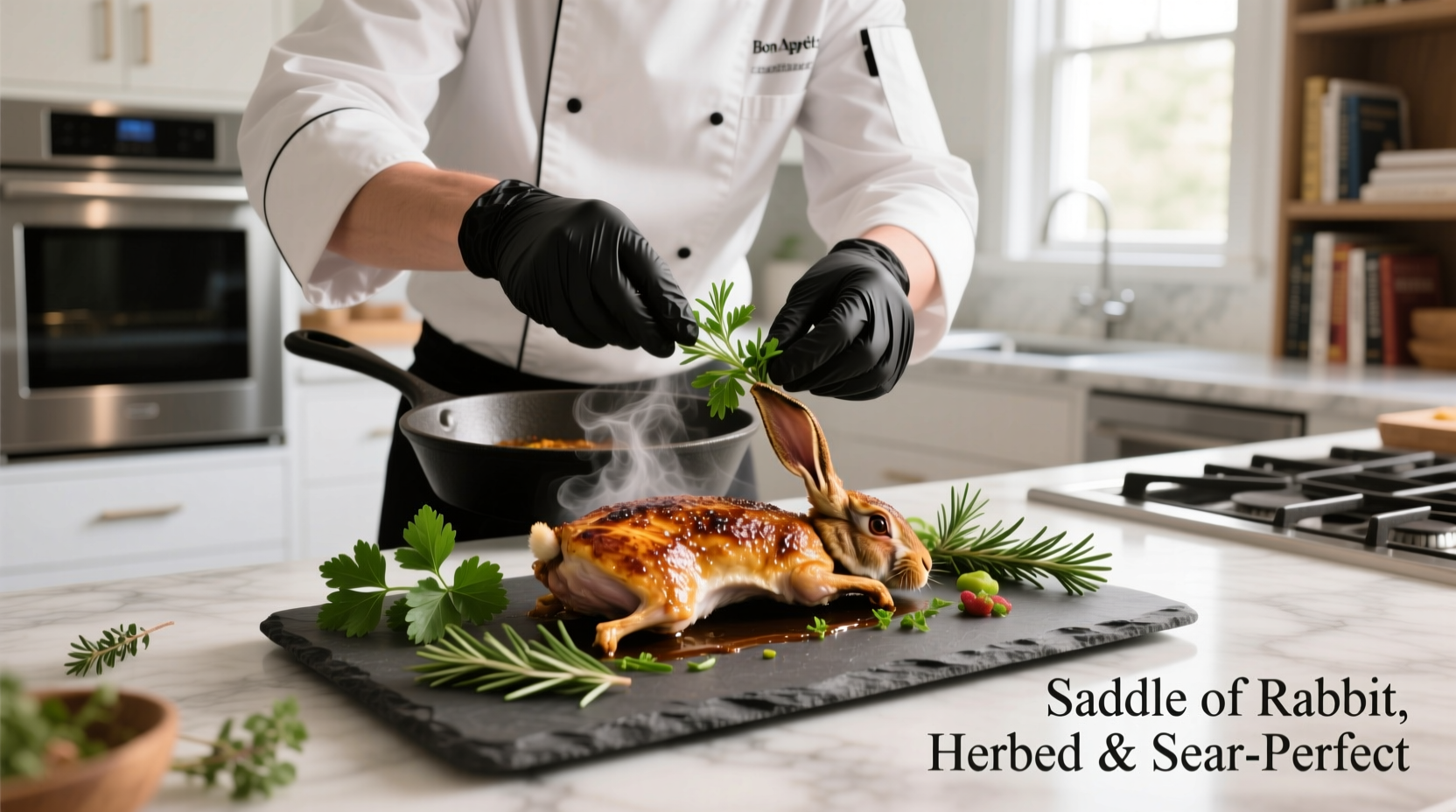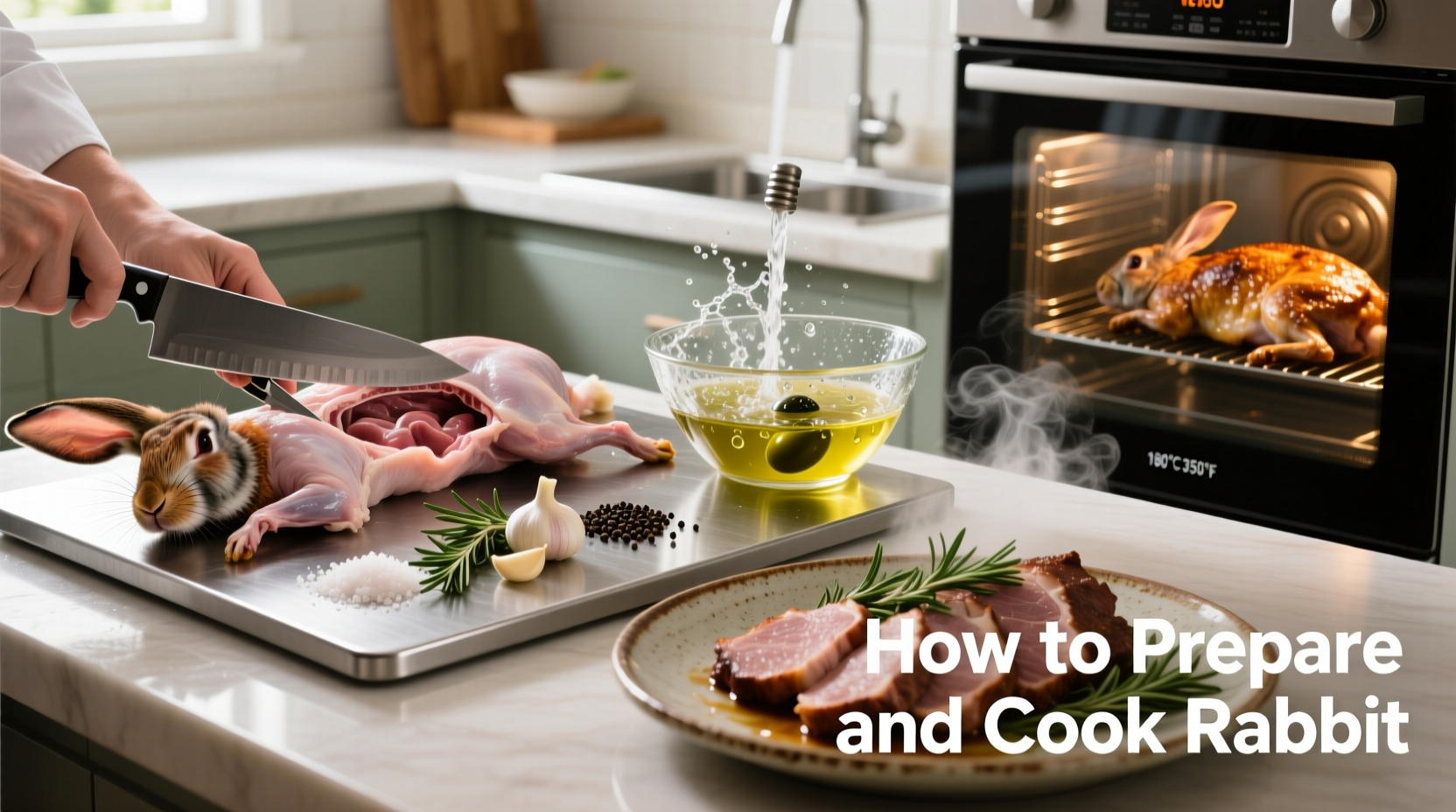Preparing rabbit for the table transforms this lean, flavorful game meat into a culinary delight when handled correctly. As a French-trained chef specializing in European game preparations, I've refined rabbit cooking techniques through decades of practice across Provence, Tuscany, and Catalonia where rabbit features prominently in traditional cuisine. This guide delivers precise, field-tested methods that ensure tender, flavorful results every time.
Understanding Rabbit's Unique Qualities
Rabbit stands apart from common poultry and red meats with distinctive characteristics that demand specialized handling. This lean protein contains just 3.4g of fat per 100g compared to chicken's 7.2g, making it exceptionally healthy but prone to drying out if improperly cooked. The USDA confirms rabbit requires thorough cooking to 165°F internal temperature to eliminate potential pathogens like Francisella tularensis, particularly important for wild-caught specimens.

Sourcing Quality Rabbit
Commercial rabbit producers follow strict USDA guidelines ensuring consistent quality and safety. Look for "farm-raised" labeling which indicates controlled breeding environments free from wild contaminants. Wild rabbit requires careful field dressing within 20 minutes of harvest to maintain quality – a practice documented in state wildlife department guidelines across 32 U.S. states with hunting seasons. When purchasing, select meat with pale pink color, firm texture, and no strong odors. The saddle (loin section) should feel springy to touch, indicating freshness.
Essential Preparation Techniques
Proper preparation makes the difference between tough, dry meat and succulent perfection. Begin by trimming excess fat and silverskin – rabbit has minimal fat content so preserving what exists enhances moisture. For whole rabbits, separate into five pieces: two legs, two loins (saddle), and the ribcage. The French "découper le lapin" method involves removing the backbone first for easier portioning. Always rinse under cold water and pat thoroughly dry – moisture on the surface prevents proper browning. For tougher cuts like legs, consider a 4-12 hour marinade with acidic components like wine or vinegar which tenderizes the connective tissue without compromising texture.
Cooking Method Comparison
| Cooking Method | Ideal Cuts | Temperature | Time | Best For |
|---|---|---|---|---|
| Roasting | Saddle (loin) | 375°F | 25-30 minutes | Elegant presentations, special occasions |
| Braising | Legs, ribs | 300°F | 1.5-2 hours | Tenderizing tougher cuts, winter dishes |
| Grilling | Saddle, ribs | Medium-high | 15-20 minutes | Summer meals, smoky flavors |
| Stewing | All cuts | Simmer | 1.5 hours | Hearty meals, traditional recipes |
Step-by-Step Roasted Rabbit Saddle
This classic French preparation showcases rabbit's delicate flavor. Preheat oven to 375°F. Season the saddle with salt, pepper, and fresh thyme. Heat olive oil in an ovenproof skillet until shimmering. Sear rabbit fat-side down for 4 minutes until golden brown, then flip and sear other side for 3 minutes. Add 2 crushed garlic cloves and 4 sprigs fresh rosemary to the pan. Transfer skillet to oven and roast for 18-22 minutes until internal temperature reaches 165°F. Rest for 10 minutes before slicing across the grain. The resting period allows juices to redistribute – skipping this step causes moisture loss when cutting.
Flavor Enhancement Strategies
Rabbit's mild flavor welcomes bold accompaniments. Traditional Provençal preparations use Dijon mustard, white wine, and mushrooms in a coq au vin-style braise. For contemporary twists, try orange zest and juniper berries which complement rabbit's natural sweetness. The meat pairs exceptionally well with acidic elements – a splash of vinegar in braising liquid balances richness while lemon juice brightens roasted preparations. When seasoning, remember that rabbit requires slightly more salt than chicken due to its leanness – increase by about 15% for optimal flavor development.
Safety and Storage Guidelines
Follow strict food safety protocols when handling rabbit. Store fresh rabbit at 40°F or below and use within 2 days of purchase. Never thaw rabbit at room temperature – the USDA recommends refrigerator thawing for 24-48 hours or cold water submersion with water changes every 30 minutes. Leftovers keep for 3-4 days refrigerated or up to 3 months frozen. Always reheat to 165°F internal temperature. For wild rabbit hunters, state wildlife agencies universally advise against consuming meat from animals showing signs of lesions or abnormal behavior which may indicate tularemia.
Troubleshooting Common Issues
Dry meat typically results from overcooking – use a reliable meat thermometer and remove rabbit at 160°F (it will carryover cook to 165°F during resting). Tough legs often indicate insufficient braising time – extend cooking by 20-30 minutes until fork-tender. If flavors seem flat, boost acidity with lemon juice or vinegar which enhances perception of other seasonings. For gamey flavors in wild rabbit, soak pieces in buttermilk for 4-6 hours before cooking – the lactic acid neutralizes strong odors while tenderizing the meat.
Regional Preparation Variations
Culinary traditions shape rabbit preparation worldwide. In Spain's Catalonia region, conill a la llauna features rabbit baked in a terracotta dish with mushrooms and herbs. Italian coniglio alla cacciatora uses tomatoes, olives, and capers in a hunter-style stew. French lapin à la moutarde highlights the meat with a creamy Dijon sauce. These regional differences demonstrate how local ingredients influence preparation – Mediterranean versions emphasize olive oil and tomatoes while Northern European preparations feature more root vegetables and beer-based braises. Understanding these context boundaries helps select appropriate flavor profiles for your culinary goals.











 浙公网安备
33010002000092号
浙公网安备
33010002000092号 浙B2-20120091-4
浙B2-20120091-4